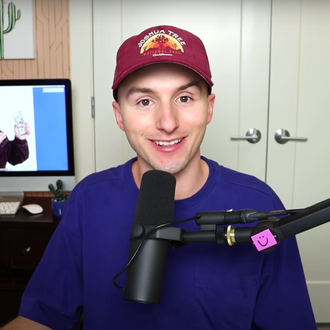
HEYWHAT’SUPYOUGUYS! Today we’ll be talking about the series that almost never came to be: Netflix’s Hype House. Netflix quietly released its TikTok reality series, which follows a group of social-media influencers living in a mansion together in Los Angeles. Described as “a social-media collective,” the series follows Cole Chase Hudson a.k.a. Lil Huddy (@lilhuddy), Nikita Dragun (@nikitadragun), Thomas Petrou (@petroutv), Kouvr Annon (@k0uvr), Larri Merritt (@larrayeeee), Alex Warren (@alexwaarren), and Jack Wright (@jack.wright) as they deal with drama and content creating. Sienna Mae Gomez, who was originally announced in the series, was removed entirely from the show after news of allegedly sexually assaulting fellow Hype House member Jack Wright came out. The show briefly dives into sensitive issues like Nikita Dragun’s alleged blackfishing that doesn’t end up being resolved; it was only a small anticlimactic moment at the end of an episode. Commentary YouTubers had a lot to say about the Hype House, as it is a popular topic for them to analyze and poke fun of. And as more internet celebrities are diving into mainstream entertainment, the D’Amelio sisters’ show on Hulu and Addison Rae’s She’s All That for Netflix, YouTubers have continued to be critical of how their profession is portrayed in popular media. Below are some analyses from the people who know content creation the best: YouTubers.
In Swell Entertainment’s “the boring drama of the Hype House on Netflix”, Amanda Golka called the show’s allegedly fabricated storylines “bad tea.” “Whoever wrote this fabrication was bad. It’s not good,” said Golka. She called Nikita Dragun’s involvement in the series “pot-stirring,” as Dragun would ask inciting questions to create drama in the house for a show with very little interesting drama. Golka criticized the portrayal of the creator work-life balance and that it didn’t seem like the Hype House liked their jobs. “I am a content creator … my experience is drastically different from theirs, I am nowhere near the [popularity] size of any of these people, but I know what I like about my job,” defended Golka.
Casey Aonso has investigated the Hype House phenomenon in previous videos, pointing out the insane amount of advertising that goes into a hype house video. “They talk about Bang Energy so much,” describes Aonso. In her first Hype House analysis, she notices that a Tik Tok account that was supposed to be based in collaboration with different creators ended up becoming an advertisement to pay their rent. “Thomas [Petrou] actually admits that the rent for their mansion is entirely paid for by those ads,” summarized Aonso. She also describes newfound respect for Petrou as his job of begging 20-year-olds to do Bang energy ads “sounds like the most annoying job on planet Earth.” Ultimately, Aonso was disappointed in the show, citing that it could’ve been an opportunity to create a dialogue on a mutually beneficial relationship between YouTube and creators.
Veteran YouTuber Lucas Cruikshank (you more likely know him as Fred Figglehorn) is an expert on television adaptions of YouTube channels. Nickelodeon adapted Fred into three films and a television series. He summarizes the plot of the show and says that if there is ever a season two, it needs more caddy drama. “For season two, these new Hype House members better not be super popular and better be so desperate they’ll do anything for drama,” hopes Cruikshank.
The future of internet culture in mainstream media is uncertain. Internet fans want a more authentic look at the issues content creators are dealing with; however, it’s being fed through a traditional reality-TV lens. Netflix has figured out the formula for other unscripted reality, but can they figure it out for the internet?


